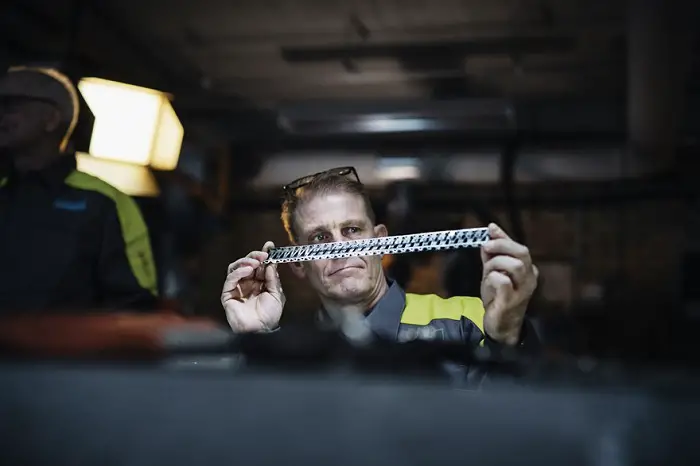Say hello to the world’s lightest and strongest construction ever. The Isotropic Lightweight Structure (ILS) relies on Sandvik’s hyper duplex material and presents endless possibilities wherever there is a need for strength, lightness and anti-corrosive properties.
Stronger, lighter, more environmentally friendly and energy efficient – development in material technology is moving quickly. The materials industry has come so far in fact, that building the Eiffel Tower in Paris today would require just 25 percent of the material that was used when construction began in 1887.
One of the exciting new patented materials coming from Sandvik is Sandvik SAF™ 3207 HD (hyper duplex) strip steel. Sandvik is the only supplier in the world that can offer this grade of steel. It is extremely strong, durable, recyclable and highly corrosion resistant, making it ideal particularly for marine environments. And, due to its high strength, far less material is required, making all applications lighter.
Lighter, stiffer, stronger
The potential to use this new material came to the attention of the Swedish NITIU think tank while mulling over a way for Swedish industry to become more competitive and achieve its global environmental goals by cutting down on fossil fuels. NITIU’s team, including Michail Stockfelt and Patrik Eriksson, developed an Isotropic Lightweight Structure (ILS) using Sandvik SAF™ 3207 HD strip steel. The structure has a patented sandwich pattern that, as Eriksson says, “has been recognized for many years but nobody has been able to create it in an industrial manner.” Until now, that is.
Initially, it is hoped that this rigid supporting structure will be used for energy applications such as storing gas in a vehicle chassis or storing clean hydrogen from wind turbines out at sea. Being isotropic means that the structure will withstand pressure from every direction, including from the inside.
“Together with Sandvik we have optimized this design to create a stainless steel structure that is lighter, stiffer and stronger than carbon fiber, that can contain the fuel of tomorrow, is fully recyclable and produced using green electricity,” says Patrik Eriksson enthusiastically. “The fascinating thing with this structure is that it uses the full yield strength of the material which is very uncommon. It is as strong or stronger than other constructions, but lighter. It is amazing that it is actually possible today to invent a new type of building block that is better than anything we’ve seen before”, says Tomas Forsman, R&D Engineer at Sandvik.

Leave a Reply